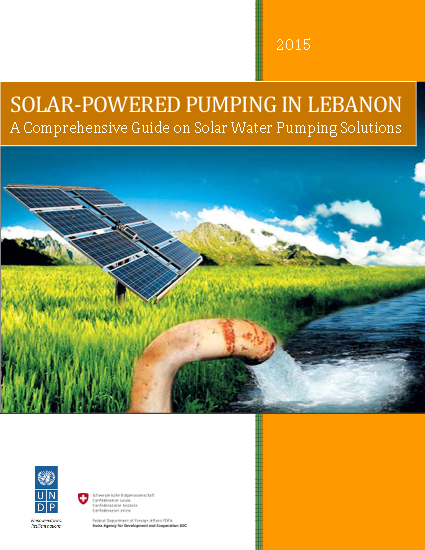A comprehensive guide on solar water pumping solutions

Following the Syrian Crisis, the majority of refugees are being hosted in communities that are among the poorest in the country, including the North of Lebanon and the Bekaa. These communities suffer from poor water services due to lack of adequate infrastructure and have limited means to expand local sources of livelihood including agriculture. A new UNDP project is targeting to improve the water supply services in North Lebanon specifically in Wadi Khaled and Akroum Area.
Given the opportunities available to use renewable energy for water pumping for both water distribution networks and for the extraction of water for irrigation, an assessment of the viability of solar pumps was carried out in order to:
- Review the types of PV systems that could be used to run the pump taking into consideration the efficiency and cost. Suppliers and Dealers of such systems should be identified and consulted.
- Distinguish the appropriate type, model, and number of solar panels needed for different uses, with particular focus on pumping capacity for potable water distribution networks and agriculture, to always ensure the highest performance and efficiency.
- Identify all required electronic device (the controller unit) which matches the PV power needed to regulate the operation, starting and stopping the pump.
- Describe and highlight on the efficiency of such PV system especially in bad weather and in low light conditions such as cloud cover and storm.
- Outline the general maintenance needed for such system, including financial and technical resource requirements.